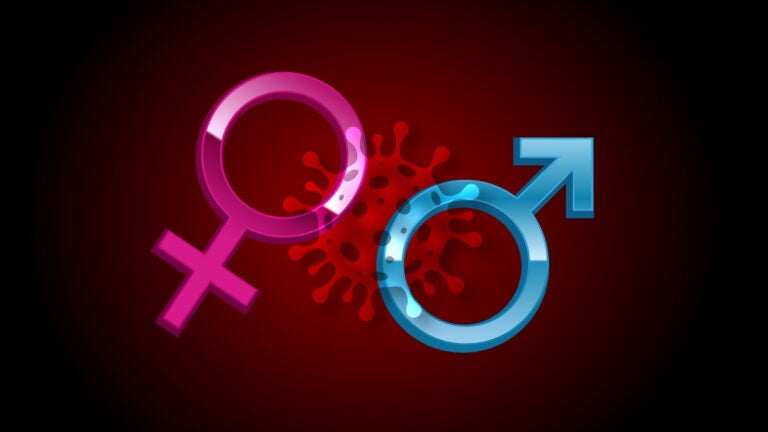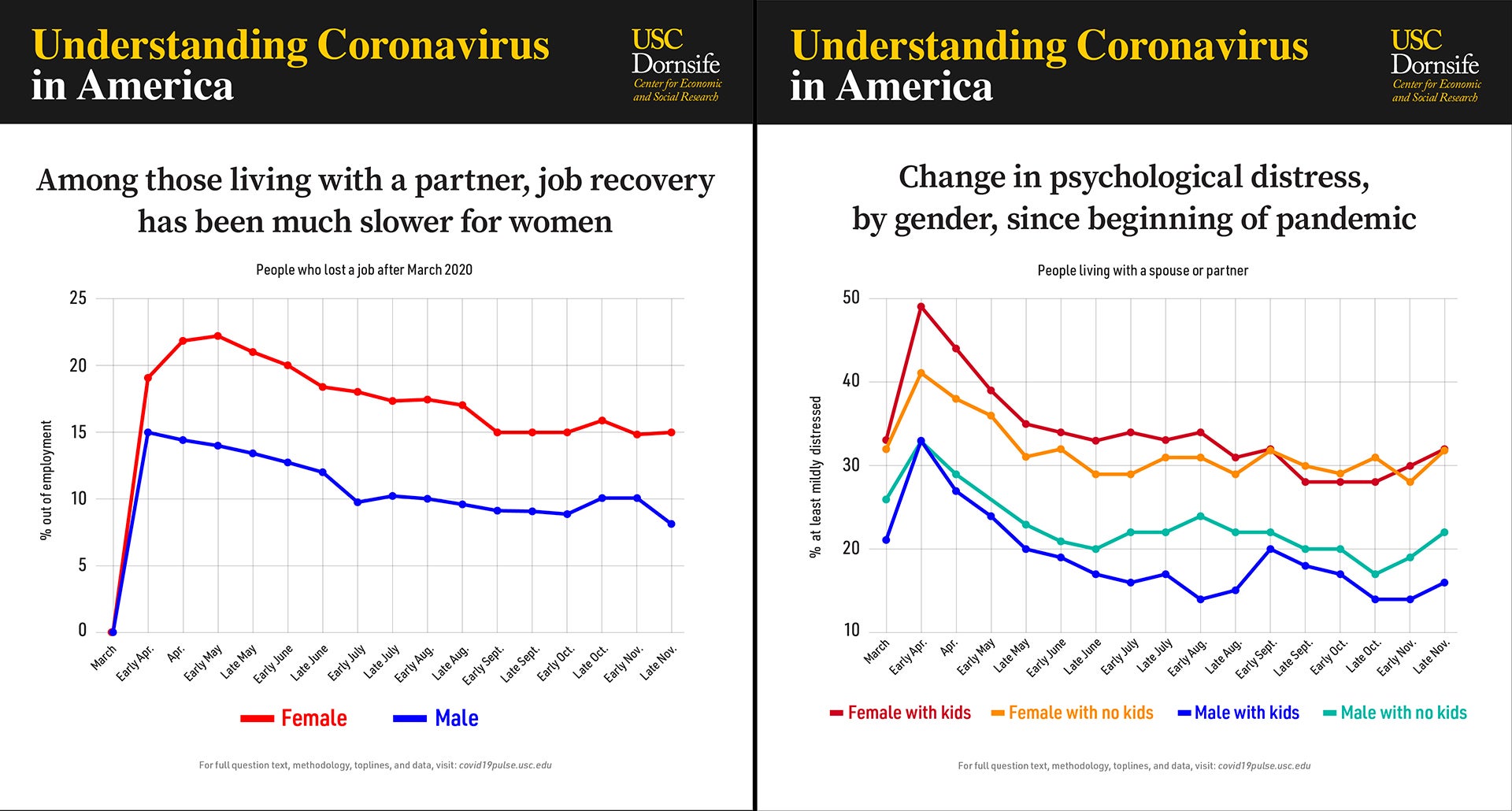
Among couples, the pandemic continues to disproportionately impact women
In June, analysis of data from the Understanding Coronavirus in America Study, conducted by the USC Dornsife Center for Economic and Social Research (CESR), examined gender differences from the impact of the COVID-19 pandemic since it began. Recently, researchers returned to the data for further insights and determine what, if anything, has changed since the original report.
Researchers analyzed survey responses from over 3,100 people throughout the country who are living with a spouse or partner age 18 to 64. The following highlights emerged:
- Child care: Women, even those working, carry an increasingly heavier load than men when it comes to providing child care and educational support for their children. Since last spring, the percentage of working moms who have sole responsibility for providing child care and help with schoolwork has increased from 33% to 45%.
- Employment: Women have lost jobs at a higher rate than men during the pandemic and almost twice as many remain without a job, compared to men. Among those living with a spouse or partner who were employed in March 2020, 19% of women lost their jobs in April, compared to 15% of men. Of these, 15% of women were without a job at the end of November, compared to 8% of men.
- Psychological distress: Pandemic-related psychological distress for both men and women has decreased since peaking in early April, but among men and women who have children, the gender gap among those experiencing psychological distress remains highest. At the end of November, 32% of women (with and without kids) were experiencing psychological distress, compared to 22% of men without kids.
During the first chaotic stages of the coronavirus pandemic in early April, women with children were 9 percentage points more likely than those without kids to experience psychological distress. By the end of November, that gap had been eliminated.
“Women continue to disproportionately suffer the consequences of the COVID-19 pandemic,”said Gema Zamarro, study author and adjunct CESR senior economist. “This could have important implications for the recovery of the economy and represent a significant step back in terms of gender equality.”
About the study
Participants in the Understanding Coronavirus in America Study participated in 17 tracking survey waves this year from March 10 through Nov. 25. Sample sizes and margins of sampling error for the populations in this release are available in the full study report.
Graphs of key data from the biweekly study are updated daily and available to researchers and the public at: covid19pulse.usc.edu.
Zamarro and co-author Maria J. Prados, economist at CESR, are available for comment on the study findings.
